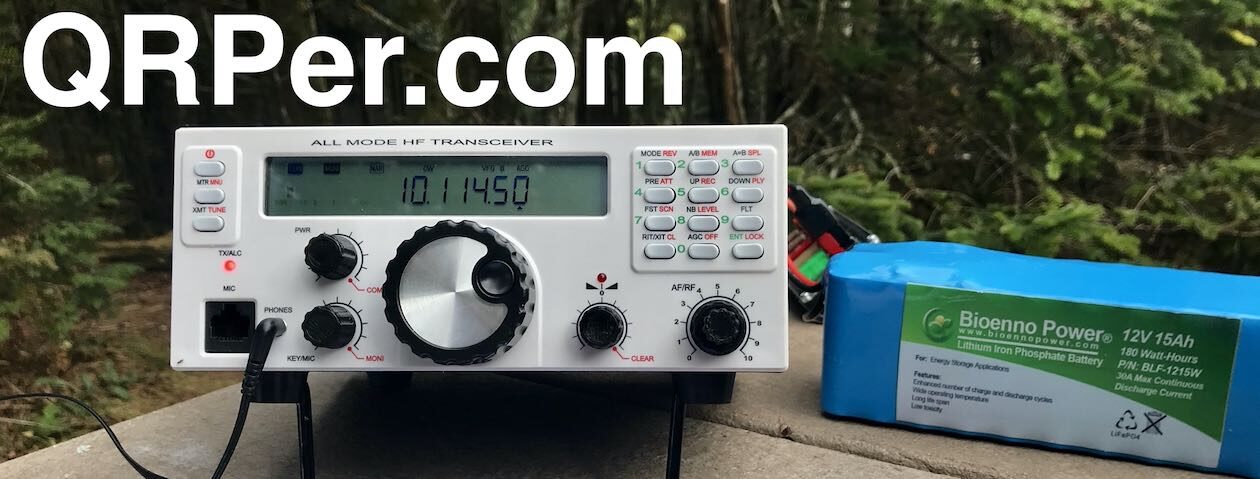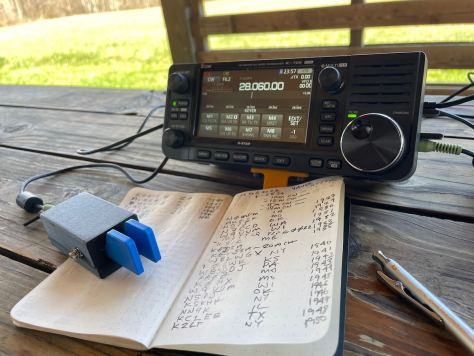 I do my best to shake up each field activation I perform. Even if in some small way.
I do my best to shake up each field activation I perform. Even if in some small way.
While it would be way more efficient to deploy the same radio and antenna combination at each park and summit I visit, I get a thrill out of trying different radio and antenna combinations.
I should add that I’m fully aware how fortunate I am to have a lot of radios and even more antennas to pair in various combinations. I keep reminding myself that building and buying radios and antennas is still cheaper than restoring a 1940s era Willys CJ-2A.
Recently, a reader reached out and asked my opinion about the Chameleon Tactical Delta Loop (CHA TDL) antenna. I think the TDL is a brilliant antenna system, actually, and the one I recommend the most from Chameleon because of its versatility.
Not only can it be deployed as a multi-band vertical delta loop but it has all of the parts needed to be an MPAS Lite vertical as well, save the counterpoise.
The CHA TDL comes with a 25 foot wire that connects the two 17′ whips into a loop configuration, but the clamps on the end of that wire can’t connect to the ground lug on the MPAS ground spike terminal as-is. That said, you could easily make a short connector cable or connection point that would allow the CHA TDL wire to clamp to the ground spike terminal. Else, of course, you could cut a dedicated 25′ counterpoise from pretty much any wire you might have around the shack.
You can buy the same counterpoise used with the MPAS Lite package, but it’s more affordable just to build your own since there’s no magic in the counterpoise. And, FYI, configured as the delta loop, there’s no need for a separate counterpoise; only if you configure it as a vertical.
This same reader also has an Icom IC-705 and an mAT-705 Plus antenna tuner. He was curious how well that combo might work with the CHA TDL. I knew that the combo would work well, but I thought, “why not try it?”
I realized that it has been ages since I last deployed the CHA TDL in the field.
Zebulon B. Vance Birthplace (K-6856)
Tuesday, February 28, 2023, was a gorgeous day weather-wise, although it was a bit gusty at times.
I arrived at K-6856 and decided to film the full set-up of the CHA-TDL.
For an antenna with a fairly large profile when deployed, it’s actually very compact, albeit a bit heavy (mainly due to the weight of the solid stainless ground spike and TDL hub). That said, I did take this same CHA TDL setup on an 11 mile round-trip SOTA hike once and didn’t find it too heavy.
I placed my Icom IC-705 on the table in the picnic shelter and connected the mAT-705 to it with a 2′ BNC-BCN RG-316 cable and the ATU control cable.

The mAT-705 Plus is an effective ATU, but I don’t like the fact that it only pairs with the IC-705 with and via a control cable.

It would be so much more useful if you could bypass the control cable so the mAT-705 Plus could be paired with other radios (like my TR-35, MTR-3B, and other small QRP radios). I’m sure you could modify the ‘705 Plus to work with other radios, but I feel like it should do this out of the box.
I deployed the CHA TDL and quickly realized that I needed to secure it so the gusty winds wouldn’t rotate it. Normally, I have a short bit of paracord with a ground stake that I use to secure the TDL, but I forgot to bring it. I improvised by tying a weighted Nylon grocery bag to one side of the loop. Not an elegant solution, but it did the trick!
You may have to click on the image to see the CHA TDL above. Even though it’s not a small antenna, it’s still pretty darn stealthy from a distance!
Gear:
Note: All Amazon, CW Morse, and eBay links are affiliate links that support the QRPer.com at no cost to you.
- Icom IC-705
- Pelican 1400 Waterproof Case
- Icom IC-705 3D Printed Foot
- Mat-Tuner mAT-705Plus
- Chameleon CHA TDL (Tactical Delta Loop)
- Key cable: Cable Matters 2-Pack Gold-Plated Retractable Aux Cable – 2.5 Feet
- CW Morse “Pocket Paddle”
- Rite In The Rain Weatherproof Cover/Pouch
- Moleskine Cahier Journal
- GraphGear 0.9mm 1000 Automatic Drafting Pencil
- Camera: OSMO Action Camera with Sensyne Phone Tripod
On The Air
I had a bit of time to spare at this particular activation, so I decided to start the activation on 10 meters, and move down one band at a time to see where the HF activity might be that particular day.
Ten meters was pretty much dead (it has been quite alive most recently, though!). I then QSYed to 12 meters.
Same thing. Next, I moved to 15 meters.
Still no takers, so I moved to the 17 meter band…
Seventeen meters was in much better shape; I logged a total of 7 stations in 7 minutes. Then it was quiet, so I QSYed to the 20 meter band.
Twenty meters was absolutely hopping! I logged an additional 14 stations in 12 minutes.
I was having so much fun on 20 meters, I wasn’t paying attention to the time and realize I’d left myself with only a few minutes to pack up my station and hit the road; I didn’t want to be too late picking up my daughters from school.
I called QRT with stations still calling, hopped off the air, and packed up my gear!
QSO Map
Here’s what this 5 watt activation looked like when plotted out on a QSO Map.
Activation Video
Here’s my real-time, real-life video of the entire activation. As with all of my videos, I don’t edit out any parts of the on-air activation time. In addition, I have monetization turned off on YouTube, although that doesn’t stop them from inserting ads before and after my videos.
Note that Patreon supporters can watch and even download this video 100% ad-free through Vimeo on my Patreon page:
Click here to view on YouTube.
Thank you
 Thank you for joining me on this activation!
Thank you for joining me on this activation!
I hope you enjoyed the field report and my activation video as much as I enjoyed creating them!
I was so pleased using the CHA TDL again that I am going to keep it handy for more activations. I have one particular SOTA summit in mind, in fact!
 Of course, I’d also like to send a special thanks to those of you who have been supporting the site and channel through Patreon and the Coffee Fund. While certainly not a requirement as my content will always be free, I really appreciate the support.
Of course, I’d also like to send a special thanks to those of you who have been supporting the site and channel through Patreon and the Coffee Fund. While certainly not a requirement as my content will always be free, I really appreciate the support.
As I mentioned before, the Patreon platform connected to Vimeo make it possible for me to share videos that are not only 100% ad-free, but also downloadable for offline viewing. The Vimeo account also serves as a third backup for my video files.
Thanks for spending part of your day with me!
Cheers & 72,
Thomas (K4SWL)













Well Thomas , you got a two-fer from me with this entry. One: another excellent activation. Two: I had a ’41 Willys that I had to part with and still rue the day. Had a 3B engine that had replaced the 2A. 10 gallon fuel tank and 10 miles to the gallon!
Al
K7AOZ
Oh wow! Someday, I hope to stumble upon a similar vintage Willys. There’s just nothing else quite like them. 10MPG isn’t that bad for one of those!
I was watching your POTA spots that day and really hoping I could get you into my log. I’m heartened that you got a WA contact, that means my state is possible.
Now it’s a mission. I have spent so many walks listening to your POTA activations that I’m afraid I”m going to send your call instead of my own.
But mark my words, Witherspoon: I WILL GET YOU INTO MY LOG.
73 de AG7SM
IT WILL HAPPEN!!!!
Thomas,
The wire included in the TDL actually can be used as is for a counterpoise. Just loosen the red ground screw slightly and apply the wire clamp sideways over the screw head (90 degrees to the threads). The underside of the plastic screw has a large metallic disc which is in continuity with the ground. Not an elegant solution but it works in the field. That said, I use a 6 inch wire with alligator clamps which will save wear on the ground screw.